Farrar, Straus & Giroux, 2020. 784 pages. Illustrated. $40.00. Available as a printed book, e-book, and audiobook. Supplemented by an “Audiovisual Companion” on Alex Ross’s website.
Reviewed by James Leggio
The subtitle of Alex Ross’s Wagnerism book — Art and Politics in the Shadow of Music — points to the special nature of his study: it’s not a book about Richard Wagner’s life and work per se but rather the long and sometimes dark shadow that his music, writings, and persona have cast across Western culture since the mid-nineteenth century. Or, to switch the metaphor from darkness to light, Wagner’s lifework can be seen as a kind of comet streaking across the sky, followed, as comets are, by a long, fiery tail, which extends to the present day.
As the publisher puts it:
A mighty procession of writers, artists, and thinkers, including Charles Baudelaire, Virginia Woolf, Isadora Duncan, Wassily Kandinsky, and Luis Buñuel, felt his impact. Anarchists, occultists, feminists, and gay-rights pioneers saw him as a kindred spirit. . . . Wagnerism restores the magnificent confusion of what it means to be a Wagnerian. A pandemonium of geniuses, madmen, charlatans, and prophets do battle over Wagner’s many-sided legacy. The narrative ranges across artistic disciplines, from the architecture of Louis Sullivan to the novels of Philip K. Dick, from the Zionist writings of Theodor Herzl to the civil-rights essays of W.E.B. Du Bois, from O Pioneers! to Apocalypse Now.
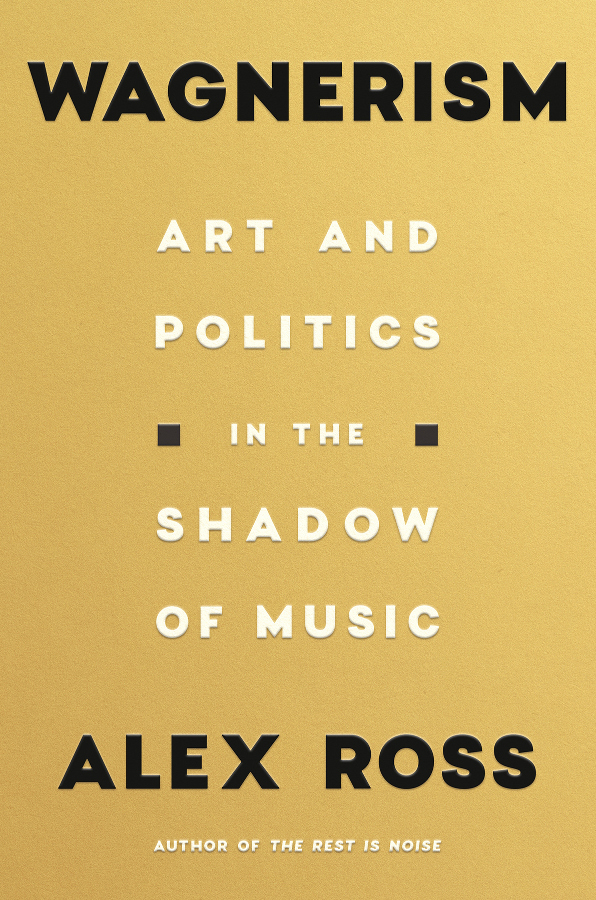
Splendid in its largesse and acute in its critical judgements, Wagnerism: Art and Politics in the Shadow of Music has been widely reviewed. (See the live links to fourteen of those reviews at the end of this essay.) With so many important reviewers having already weighed in, you may wonder why yet another notice is offered here.
So, to be clear, this brief essay is not so much an analysis of the historical content of Ross’s book, as it is an exploration of the prospects for publishing within a multimedia landscape. For having now read Wagnerism across its various incarnations — paper book, e-book, and audiobook, as well as its Audiovisual Companion on Ross’s website — what strikes me most about his ambitious work of cultural history is this: its various formats expose, in different ways, the inadequacy of our current mainstream publishing templates when confronted by an interdisciplinary project that cries out for born-digital multimedia presentation. The timid e-book version makes no effort whatever to accommodate media features. And the audiobook, though it has audio-only music clips, doesn’t help much in that regard either, since there’s no way to access the clips directly and no list of them. That’s quite a hurdle in an audiobook whose indicated running time exceeds 28 hours. (In comparison, it takes about 17 hours of stage time to perform Wagner’s entire cycle Der Ring des Nibelungen.) Of course, you can spread your book-listening time over days or weeks, but that would dissipate the cumulative force of the unfolding historical argument.
My sense is that much of Wagnerism might be better served in an audiovisually-equipped e-book format, where not only Wagner’s music but also the other performing arts the author talks about could be heard and seen directly, instead of only in verbal paraphrase.
The Audiovisual Companion
In fact, in a brave spinoff venture on his personal website, Ross has made such resources available, in the form of the free Audiovisual Companion, containing a wealth of audio clips of music by Wagner and others, many links to videos, and documentary and fine-art images, all keyed to page numbers in the printed book.

With so much useful context presented there, I’m surprised that among the many press reviews of Wagnerism, none I’ve yet come across even mentions the existence of the Audiovisual Companion. The text of the book itself doesn’t point out that you can consult the Companion for elaboration, nor does the publisher seem to be publicizing that resource. Still, comprehensive as its text proper is on paper and in its e-book and audiobook forms, Wagnerism remains somehow incomplete without this invaluable, indeed essential, Companion.
A book reviewer in The Spectator seems to have sensed an incompleteness in Wagnerism taken as a text alone, complaining that “it is possible, as Ross has found, to write a very long book about [Wagner’s] influence which has almost nothing to say about the music itself.” What Ross says about the music is significant and illuminating — but its impact is largely cordoned off in the separate Audiovisual Companion, illustrated by recordings of “the music itself,” a resource no one seems to cite in reviews of the book.
Despite the reviewer’s complaint, chapter 1 of Wagnerism begins with a fine explication of the prelude to Das Rheingold:
In the beginning was the tone: octave E-flats in the double basses, sustained in a barely audible rumble. Five bars in, bassoons add a pair of B-flats, five steps higher. Together, these notes form the interval of the perfect fifth. Like the fifth that glimmers at the start of Beethoven’s Ninth Symphony, it is an emanation of primordial nature, the hum of the cosmos at rest. Then eight horns enter one after another, in upward-wheeling patterns, which resemble the natural harmonic series generated by a vibrating string. Other instruments add their voices, in gradually quickening pulses. As the mass of sound gathers and swirls and billows in the air, the underlying tonality of E-flat does not budge. Only after 136 bars — four to five minutes in performance — does the harmony change, tilting toward A-flat. The prolonged stasis engenders a new sense of time, although it is difficult to say what kind of time it is: perhaps an instant passing in slow motion, perhaps eons passing in a blur.
Musicologically precise and poetically evocative as it is, what makes this passage comprehensible for the general reader, however, is the fact that in his Companion, Ross links it to a video of the prelude, indeed the entire opera, in performance. You can see and hear for yourself how the details of his explanation play out in the fascinating note-by-note, bar-by-bar emergence of a new musical world. The phrase “bassoons add a pair of B-flats” may mean little to the eager neophyte, but the resources of the Companion bring that harmonic entrance to life, through immediate digital access to the living, breathing score in performance.
The purpose of this essay is to acknowledge the richness that the Audiovisual Companion brings to the Wagnerism project and explore a few instances of its musical presentation. Even in the modest website platform you’re reading this on, it’s possible here to incorporate convenient live media links into the text — much more like the format of what is sometimes called an “enhanced” e-book — giving easy access to the resources of the Companion, which the printed and e-book editions of Wagnerism do not provide.
“Enhanced” E-books: Future or Past?
The Audiovisual Companion makes you wonder what the project would have looked like if the publishers had been in a position to go all in and produce such an enhanced e-book, with audio, video, and other special digital features built right into the reading product marketed to the public. Because essential though it is, the Companion remains a somewhat awkward workaround. Whether using it in conjunction with the paper book, e-book, or audiobook versions of Wagnerism, readers suffer from a confusing and interruption-ridden fracturing of the continuous reading experience, as they leap hundreds of times, like marathon jumping frogs, back and forth from one platform to another. The efficacy of audiovisual resources is somewhat compromised by that distracting flurry of repetitively changing modes — going from line reading, to page reference-number checking (if you’re using the one version that has the key paper page numbers), to webpage scrolling, to mouse clicking on buttons, to snippet listening, and then going back to the page again, to reacquire the next desired target passage. The need for that arduous exercise is not the author’s fault. Shakespeare’s Cassius was wrong: he should have said, The fault, dear Brutus, is not in ourselves but in our stars, that we are underlings — ill-served by the communications industry’s lack of interest in long-form enhanced e-reading products.

A decade ago, in “What Is Reading?,” I argued, perhaps too optimistically, for the virtues offered by the enhanced e-book and its ability to combine linear reading with the enrichment of audio and video excursions, of the kind Ross provides in his Companion, but integrated into the e-book itself, and not banished to a segregated website. However, the hard realities of the publishing marketplace have made that synthesis not possible, as production expert David Kudler explained in some detail in May 2020 in The Book Designer, in the illuminating case study “The Problem with Enhanced Ebooks”:
Back when the ebook boom was first taking off, with the introduction of the Kindle and the iPad, there was a lot of excitement about creating enhanced ebooks — ebooks containing media and scripting — sound, video, dynamic widgets that pull data from the internet, game-like scripts that allow readers to make choices and change the narrative. . . .
A lot of us in the business told ourselves, Here’s a chance to make the book something truly new!
Well, the chance came. It’s still there. But honestly? When you’re dealing with an ebook you’re going to sell through a commercial retailer like Amazon or Apple or Kobo or the rest, the options for adding this kind of enhancement are limited and, ultimately, may not be worth the trouble.
The inhibiting factors Kudler lists include the fact that not all outlets will take enhanced e-books in the first place, limiting the market. Moreover, those that do accept them take only certain technical formats and not others, fracturing the market (analogous to the futile “videotape format war” between Betamax and VHS in days of yore). And, finally, the public’s appetite for enhanced e-books, the hoped-for driving force behind it all, has simply not developed the way that many of us expected it to.
In the Comments section of the Book Designer piece, a reader says of enhanced e-books: “I can think of a few sorts of books that would benefit from this treatment. Most are nonfiction. A book of music criticism with clips embedded is an obvious example. It is akin to a book of art criticism that reproduces the works being described.” True enough. Yet the publishing industry and its retailing partners have decided for now that enhanced e-books won’t sell, and therefore aren’t worth the investment.
Alas, the enhanced e-book having not really gone mainstream, perhaps it’s not surprising that the publishers in this particular case did not invest in such a venture. But what a glorious thing it could have been, to incorporate the impressive multimedia resources of the Audiovisual Companion into the e-book itself, making — dare I say it? — a total work of art. Or, at least, a total work of critical art. Now that would have been something.
The Importance of Being Ernest Newman
Ross’s book is, as its subtitle suggests, about the shadow cast by music, and it’s true that the text can present only the shadow, not the substance, of the music itself. That’s where the Audiovisual Companion comes in, for example in showing how leitmotifs work as auditory phenomena.
As young music students, many of my generation learned about Wagner’s leitmotif practice from Ernest Newman’s The Wagner Operas, first published by A.A. Knopf in 1949 and still available as a Princeton paperback. Like Ross, Newman often wrote from a perch in the world of journalism, as music critic for The Sunday Times (London). In The Wagner Operas, the elaborate, developing scheme is laid out through verbal argument and printed musical notation. It’s a book you always wanted to read in the vicinity of a piano, so (if able) you could play the printed motifs, hear how they worked, and track their progress through a score.
The subject areas of Ross’s book require much less motivic explanation, since the main topics are art writ large and cultural politics, but his explanations are both more economical and more immediately useful, because the Companion gives you a place where, after reading his comments on the motifs, you can hear them as well. Audio resources make for a more intuitive and pleasurable learning experience. On the Companion website you can listen to the leitmotifs emerge in relevant passages — so that you see them not like a driver spotting a fixed roadside sign (perhaps warning “DRAGON CROSSING AHEAD”), but as living, dynamic entities that grow and change over time when they’re repeated or modified in new contexts. Ross effectively conveys their sense of energetic evolution, and how they both recall the past and anticipate the future, “mixing memory and desire.” For instance, if you go to the entries for pages 35 and 36 in the Companion, the occurrences of the Renunciation of Love motif in Das Rheingold, Die Walküre, and Götterdämmerung are instructively lined up for easy comparison in one composite clip, showing Wagner’s ability to enlarge the meaning of a recurrent theme in subsequent hearings. The same is shown for the Spear motif across Das Rheingold, Siegfried, and Götterdämmerung.
Other authors writing about leitmotifs have to do without. Matthew Bribitzer-Stull’s Understanding the Leitmotif: From Wagner to Hollywood Film Music (Cambridge, 2015) does provide many, many musical examples to illustrate its prose argument — but only in the form of bits of printed score. There’s no audio component at all, even in the e-book version. Bribitzer-Stull writes in a prose style both accessible and inviting, especially notable in a tightly argued study from a university press, but full comprehension is limited to those who can read a score and simultaneously hear the notes in their head.
Fortunately for all of us listeners, there’s a YouTube channel, cited by Ross, devoted to Wagner’s leitmotifs, to serve as a general reference. If only the publishers of books on music could be that helpful.
Wagner for Band
The popular march, and the world of band music more generally, is among the many historical episodes explored, and Ross’s account, as fleshed out in the Companion, is eye- and ear-opening.
On page 139, the author writes:
In 1876, on the occasion of the hundredth anniversary of American independence, [Theodore] Thomas succeeded in commissioning an American Centennial March from Wagner himself. . . . Wagner produced a work of thoroughgoing mediocrity, its most promising musical idea set aside for the Flower Maidens scene in Parsifal. . . . The rising young composer and bandmaster John Philip Sousa added a Wagner twist to his own centennial composition, a medley of national airs titled International Congress Fantasy. The piece culminates in a festive orchestration of “The Star-Spangled Banner” in the style of the Tannhäuser overture, with stuttering motifs accompanying the principal theme. In a band arrangement, the anthem is marked “à la Wagner.” Sousa once told an interviewer, “My two most popular pieces are the ‘Tannhaeuser Overture’ and the ‘Stars and Stripes.’” He added, “Wagner was a brass band man, anyway.” When he took charge of the U.S. Marine Band, in 1880, the March King regularly programmed Wagner on official occasions, including the inauguration of President Grover Cleveland, in 1885.
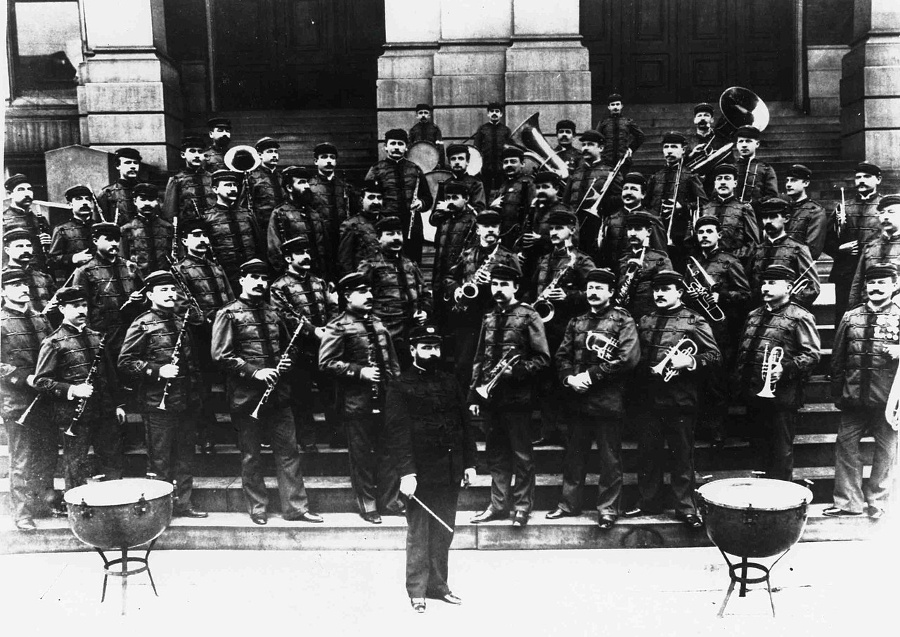
On paper, this is historically informative, but the pleasure of learning through listening starts when you turn to the Companion. There, you can discover for yourself what “thoroughgoing mediocrity” sounds like in the American Centennial March, composed in 1876. And from the same year you can enjoy its pairing with Sousa’s astonishing Wagnerization of “The Star-Spangled Banner,” with a forebodingly dramatic introduction and then Tannhäuseresque embellishments. The affinity continues in this cluster of clips with the Sousa Band playing “The Entry of the Guests” from the real Tannhäuser, as well as Sousa’s own arrangement of the Tannhäuser overture for his Marine Band. There’s even a recording of the “March of the Holy Grail” from the Edison Military Band, taken down in the aftermath of the Metropolitan Opera’s production of Parsifal in 1903.
These surprising recordings make a significant historical point: Wagnerism had a pervasive effect on the wind band, which we usually, to the contrary, think of as an icon of homegrown Americana, memorialized as such in Meredith Wilson’s apple-pie Broadway musical The Music Man (1957).
Band arrangements of Wagner have stuck around, often in educational institutions. The Companion’s recordings, like a Wagnerian madeleine, made me recall, in my youth, playing the clarinet in my high-school band’s rendition of “Elsa’s Procession to the Cathedral” from Lohengrin; during rehearsal, our conductor shouted to us over the brass-and-cymbal climax, “Here, the heavens must OPEN!” The “Procession” remains popular among wind ensembles affiliated with secondary schools or colleges (represented here by the University of Michigan). It continues to exert its inspirational power over young musicians.
From my school band days, I still have my vinyl LP of Frederick Fennell’s album Wagner for Band with the Eastman Wind Ensemble.
Appropriating Meistersinger
Powerfully expressive music, like nuclear fission, is merely a force, which can be used for either good or evil. The important chapter in Wagnerism on Nazi Germany takes an unblinking look at how the potential for evil played itself out.
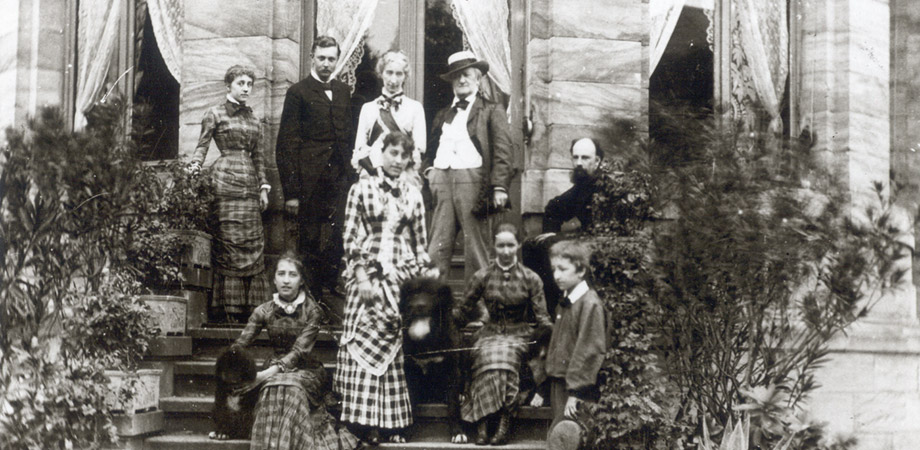
Wagner’s music can be all too easy to appropriate, as a passage in that chapter demonstrates. On page 534, while discussing Adolf Hitler’s visits to Bayreuth, Ross mentions that “the SA sang the ‘Horst Wessel’ song in cafés” there as Hitler listened. Then on page 535 the author turns to the 1933 Nazi Party rally, in Nuremberg, city of Die Meistersinger von Nürnberg:
Leni Riefenstahl was on hand with her cameras, and her half-hour propaganda film The Victory of Faith begins with scenes of the old city, accompanied by the brass chorales from the Meistersinger Act III prelude. Riefenstahl placed a similar scene in her full-length film Triumph of the Will, based on the 1934 rally. Wagner is heard as an emanation from the past, in pensive contrast to the muscular Nazi present.
To go with this account, the author provides the film Victory of Faith on his website, letting you hear those “brass chorales” in its score. To that, one can add the Meistersinger Act III prelude on its own (here taken from YouTube); listening to it afresh in its entirety, we’ll be more alert to the filmmakers’ tampering. Also listen, if you can stand it, to another addition from YouTube, the infamous Nazi anthem, the “Horst Wessel” song (“Die Fahne hoch!”), the original lyrics of which were written in 1929 by Sturmführer Horst Wessel, who after he was shot the next year came to be seen as a “martyr” for the Reich. After those two, watch the opening of Victory of Faith, tagged on the Companion to page 535. Thereby a further twist to the story makes itself felt, through the music. For in Herbert Windt’s film score, after the noble brass chorales from Meistersinger, and after the clock strikes to wake the city up, a more energetic transitional passage is heard, and then the “Horst Wessel” song itself slowly begins to rear up — its repetitive little tune tricked out with an incongruous brass-choir statement recalling the grandiose Act III prelude. The substitution amounts to musical bait-and-switch.
In the actual Meistersinger, the Act III prelude leads on to Hans Sachs’s introspective monologue “Madness! Madness! Everywhere madness!” (“Wahn! Wahn! Überall Wahn!”), which reasserts the prelude’s evocation of his beloved city. But in the monologue, Sachs also says that “madness won’t leave us in peace even here in Nuremberg.” The annual Nazi Party rallies, held in Nuremberg every year from 1933 to 1938, were blind to that particular irony.
Historic Recordings
The last chapter of Wagnerism is titled “The Wound: Wagnerism After 1945,” but Wagner’s status after World War II is a recurring theme throughout. So it’s germane that most of the Companion’s Wagnerian audio clips come from pioneering complete-opera gramophone recordings taken down in the early to mid-1950s, during the composer’s postwar rehabilitation. The Companion provides some of the elements of a brief masterclass on the early history of full-length live and studio recordings.
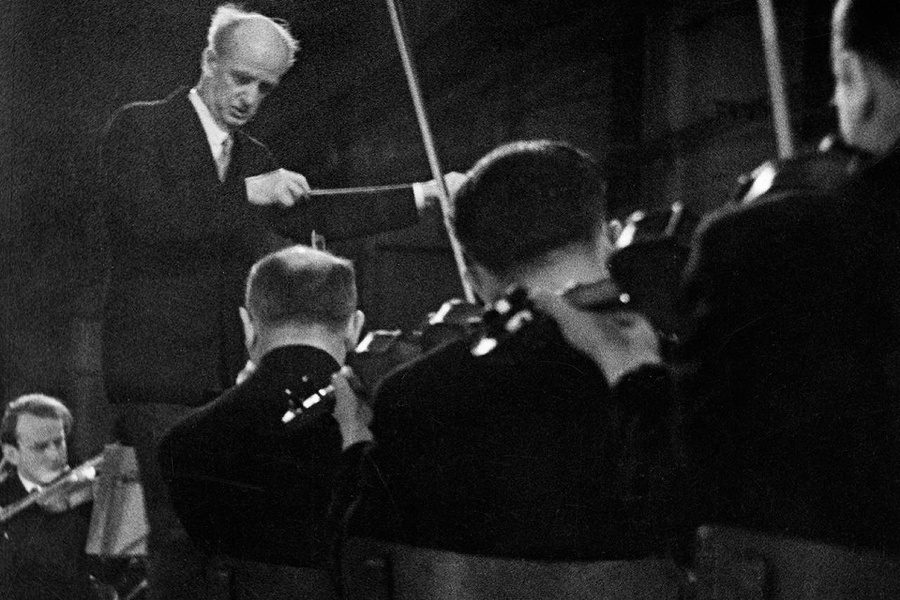
The imposing list of conductors drawn on for clips includes Wilhelm Furtwängler, represented by his complete La Scala Ring (1950), studio Tristan und Isolde (1952), and studio Die Walküre (1954); Hans Knappertsbusch, by his Bayreuth Parsifal (1951); Clemens Krauss, by his Bayreuth Ring and Parsifal (both 1953); Joseph Keilberth, by his Bayreuth Ring (1955); and Rudolf Kempe, by his studio Meistersinger (1956).
These historic early full-length recordings deserve our attention, even in brief extract form, because of their residual links to traditions of performance practice dating back to Wagner’s own time, whose influence could still be felt in some of the conductors active in the 1950s. Notably, at Bayreuth in 1910-12, Knappertsbusch had been an assistant to the composer’s son Siegfried and to Hans Richter, who had conducted the first complete Ring cycle, in 1876; while Furtwängler, according to his widow, took as his model the revered conductor Arthur Nikisch, who in his youth had played the violin in the Bayreuth Festival orchestra at that inaugural season.
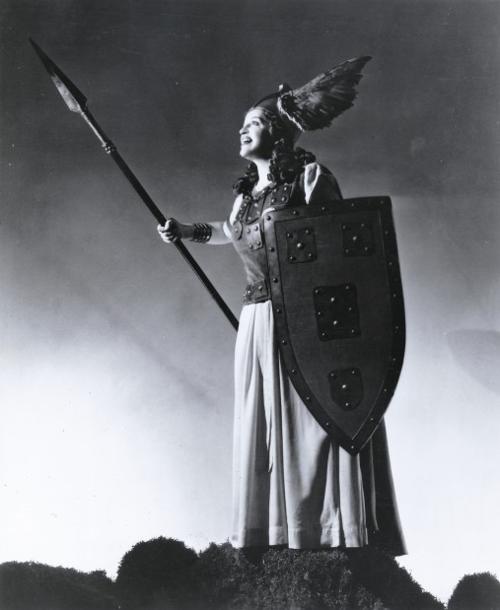
Along with their distinguished conductors, the audio clips feature many of the foremost singers of the mid-century era. They include such stalwarts as Kirsten Flagstad, Ferdinand Frantz, Gottlob Frick, Hans Hotter, Max Lorenz, Lauritz Melchior, Leonie Rysanek, Astrid Varnay, Ludwig Weber, and Wolfgang Windgassen, as well as some earlier figures, among them Leo Slezak (recorded in 1910). Amid the present-day dearth of great Wagnerian voices, they remind us what Brünnhilde, Siegfried, and the rest are supposed to sound like.
It’s a pedagogic strength that to amplify these many, often brief excerpts, the author provides longer extracts, entire acts, or whole operas, in videos of recent performances, to contextualize the shorter clips.
But what struck me most in hearing excerpts from so many different complete Ring recordings was how they highlight one of the great problems in mounting a coherent production of the entire cycle: the fact that the tetralogy, weirdly, consists of two comedies (Das Rheingold and Siegfried), alternating with two tragedies (Die Walküre and Götterdämmerung). Das Rheingold is a comedy of manners, a pointed critique of upward mobility, while Siegfried is often closer to farce. Being jerked back and forth between comedy and tragedy from day to day of the four-day festival may account for the embarrassment some audience members feel, quite understandably, when they laugh at Siegfried’s attempt to play a squawky woodwind instrument, or when they guffaw at his immortal line, “Das ist kein Mann!” They’re right to laugh: Siegfried is indeed a comedy, with a musclebound, somewhat dim protagonist.
The task, then, is to turn him into a tragic hero in the next opera, a trick that’s very hard to bring off. As Ross writes, “Siegfried’s Funeral Music is more impressive than the man himself.”
“The Ride of the Valkyries”
Once in a while, Wagner wrote stretches of decidedly lesser music that seem to be there mainly to move the plot along. This is especially the case with certain scenes of combat. In Lohengrin, the improbably stiff, perfunctory sword-fight music accompanying the trial-by-combat between the Swan Knight and Friedrich von Telramund makes you long, instead, for Errol Flynn and Basil Rathbone dueling to Erich Wolfgang Korngold in The Adventures of Robin Hood (1938). In Die Walküre, the lopsided fight between Siegmund and Hunding is not so much about combat per se as about godly intervention, and it’s over in a flash. In Siegfried, the hero’s actual fight with the dragon Fafner, as opposed to their lively dialogue immediately before and after, seems like just a lot of dutiful pounding.
I mention Wagner’s evident boredom with fight music because, in pursuing the use of “The Ride of the Valkyries” in the combat scenes of Francis Ford Coppola’s Apocalypse Now (1979), Ross is talking about a piece of music that is not actually about combat. The “Ride” depicts Wotan’s daughters careening around on their air-horses, as Wagner called them, some of them bearing the bodies of fallen warriors, it’s true, but there’s no actual fighting going on in that scene. The desired dramatic effect in the “Ride” may indeed have more to do with the imagined thrill of flight, in the composer’s pre-Wright brothers world.
The sheer headiness of flying certainly has a galvanizing effect in Ross’s “Valkyries Video,” included among his other Wagnerism supplements. (From there you can also access some other videos the author developed under the aegis of The New Yorker.)

The book’s written analysis of the helicopter attack (page 606) offers a very close reading of audible detail. The author points out specific moments that sharply undercut the seeming glorification of militarism:
The entrance of the main Valkyrie motif coincides with a wide shot of fourteen helicopters in flight. The soldiers ready their guns; [Colonel] Kilgore nods to the music. Another wide shot coincides with a gleaming B-major chord, after which the trombones take over the theme. Then comes a brilliant stroke, devised by [sound designer and editor Walter] Murch: one bar before the trombones complete their phrase, the camera cuts away to the Vietnamese village that is about to be struck. The adrenaline rush of men, machines, and music abruptly ceases as the camera lands in a quiet courtyard outside a school. . . . A female soldier runs in, ordering an evacuation, and Wagner seeps in from a distance. The trombones now finish their statement, and the Valkyries enter with their “Hojotoho!” The first missile is fired on Helmwige’s sustained high B. Houses explode, and villagers are mowed down from above.
Not only is the discussion musically detailed, but it makes plain how in this case the changing instrumentation and the sound editing function as ironic commentary on the action: a truly Wagnerian effect.
But fine as the written analysis is, you don’t fully take it in until you see and hear the Apocalypse Now clips, interwoven with Ross’s own narrating voice — in the multimedia way that many of us had imagined authors of enhanced e-books might be doing, from time to time, in our hoped-for future.
•
All in all, reading Wagnerism in conjunction with its Audiovisual Companion is rather like listening to an exceptional teacher who also happens to have an extraordinary collection of recordings and video clips, eagerly brought out to illustrate each new idea. That immediate availability of audiovisual resources is part of the promise of digital publishing. Although the book industry isn’t there yet with commercially viable technical formats, we are all in Ross’s debt for accomplishing so much, and so dazzlingly, with the digital tools currently available.
(November 2020)
Selected Reviews of Wagnerism
John Adams, The New York Times
Joseph Horowitz, The Wall Street Journal
James F. Penrose, The New Criterion
Jed Perl, The New York Review of Books
Tim Riley, Los Angeles Review of Books
